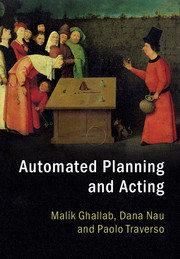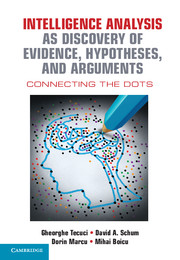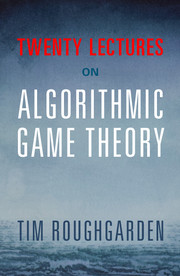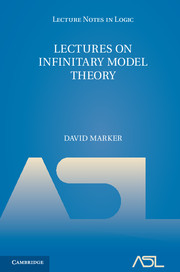Refine search
Actions for selected content:
48284 results in Computer Science
On the Widom–Rowlinson Occupancy Fraction in Regular Graphs
- Part of
-
- Journal:
- Combinatorics, Probability and Computing / Volume 26 / Issue 2 / March 2017
- Published online by Cambridge University Press:
- 09 August 2016, pp. 183-194
-
- Article
- Export citation
1 - Introduction
-
- Book:
- Automated Planning and Acting
- Published online:
- 05 August 2016
- Print publication:
- 09 August 2016, pp 1-18
-
- Chapter
-
- You have access
- Export citation
Contents
-
- Book:
- Automated Planning and Acting
- Published online:
- 05 August 2016
- Print publication:
- 09 August 2016, pp vii-viii
-
- Chapter
- Export citation
WEAK DISHARMONY: SOME LESSONS FOR PROOF-THEORETIC SEMANTICS
-
- Journal:
- The Review of Symbolic Logic / Volume 9 / Issue 3 / September 2016
- Published online by Cambridge University Press:
- 08 August 2016, pp. 583-602
- Print publication:
- September 2016
-
- Article
- Export citation

Automated Planning and Acting
-
- Published online:
- 05 August 2016
- Print publication:
- 09 August 2016

Intelligence Analysis as Discovery of Evidence, Hypotheses, and Arguments
- Connecting the Dots
-
- Published online:
- 05 August 2016
- Print publication:
- 30 August 2016

Twenty Lectures on Algorithmic Game Theory
-
- Published online:
- 05 August 2016
- Print publication:
- 30 August 2016

Lectures on Infinitary Model Theory
-
- Published online:
- 05 August 2016
- Print publication:
- 27 October 2016
HuroCup: competition for multi-event humanoid robotathletes
-
- Journal:
- The Knowledge Engineering Review / Volume 32 / 2017
- Published online by Cambridge University Press:
- 04 August 2016, e1
-
- Article
- Export citation
ADDENDA ET CORRIGENDA TO “THE ARITHMETIC OF THE EVEN AND THE ODD”
-
- Journal:
- The Review of Symbolic Logic / Volume 9 / Issue 3 / September 2016
- Published online by Cambridge University Press:
- 01 August 2016, pp. 638-640
- Print publication:
- September 2016
-
- Article
- Export citation
REC volume 28 issue 3 Cover and Front matter
-
- Article
-
- You have access
- Export citation
MORITA EQUIVALENCE
-
- Journal:
- The Review of Symbolic Logic / Volume 9 / Issue 3 / September 2016
- Published online by Cambridge University Press:
- 29 July 2016, pp. 556-582
- Print publication:
- September 2016
-
- Article
- Export citation
Consistency and trust in peer data exchange systems
-
- Journal:
- Theory and Practice of Logic Programming / Volume 17 / Issue 2 / March 2017
- Published online by Cambridge University Press:
- 29 July 2016, pp. 148-204
-
- Article
- Export citation
REC volume 28 issue 3 Cover and Back matter
-
- Article
-
- You have access
- Export citation
ReCall Special Issue: Multimodal Environments in CALL
-
- Article
-
- You have access
- HTML
- Export citation
Safe zero-cost coercions for Haskell
- Part of
-
- Journal:
- Journal of Functional Programming / Volume 26 / 2016
- Published online by Cambridge University Press:
- 28 July 2016, e15
-
- Article
-
- You have access
- Export citation
On the computational complexity of the Dirichlet Problem for Poisson's Equation
-
- Journal:
- Mathematical Structures in Computer Science / Volume 27 / Issue 8 / December 2017
- Published online by Cambridge University Press:
- 28 July 2016, pp. 1437-1465
-
- Article
- Export citation

